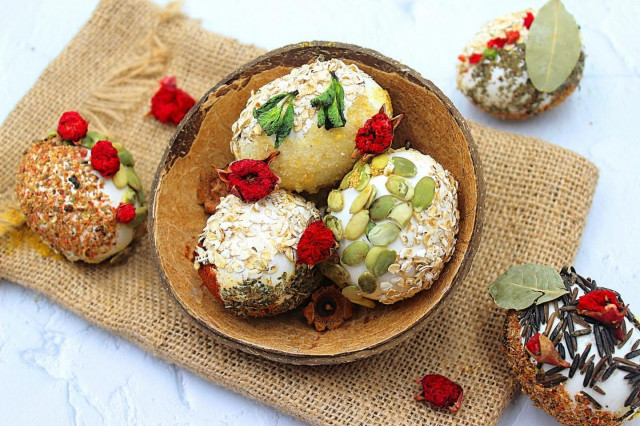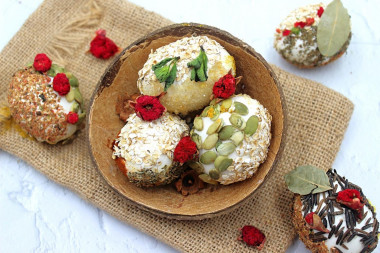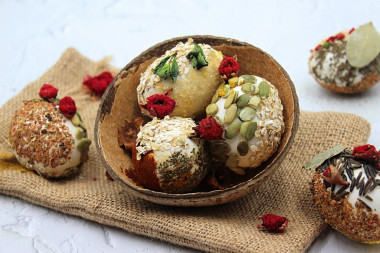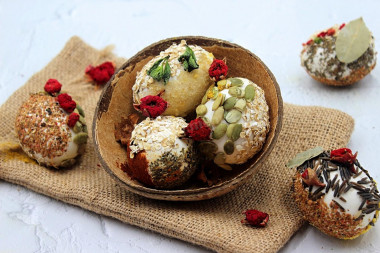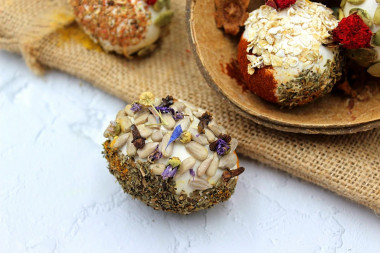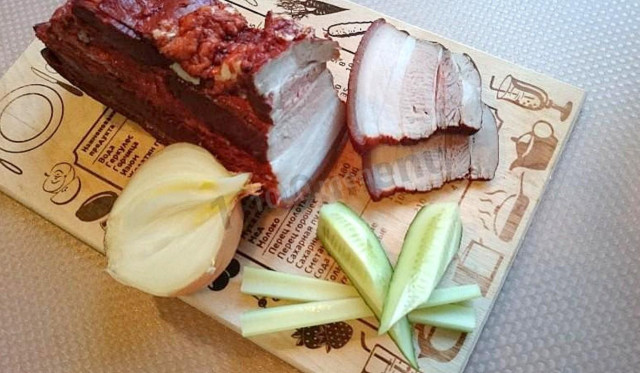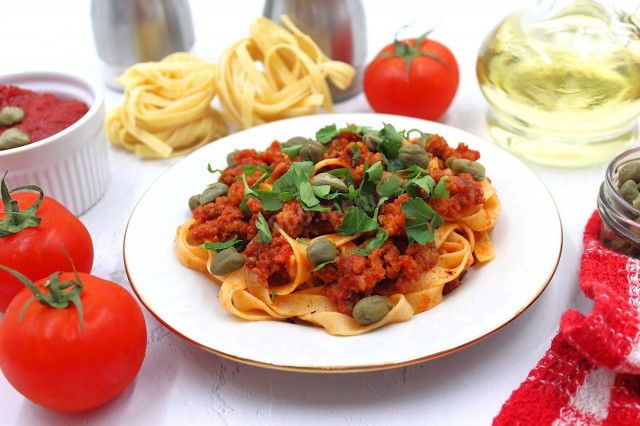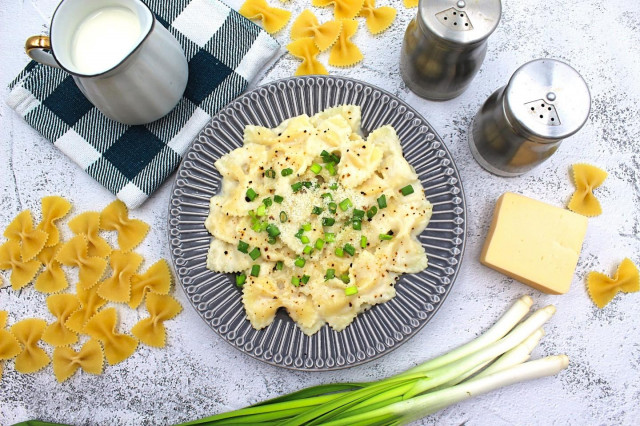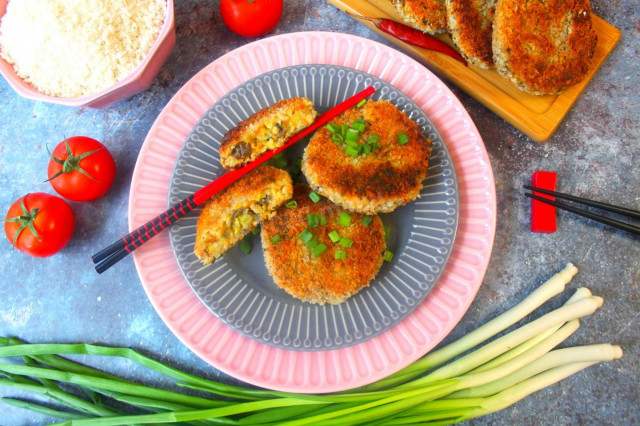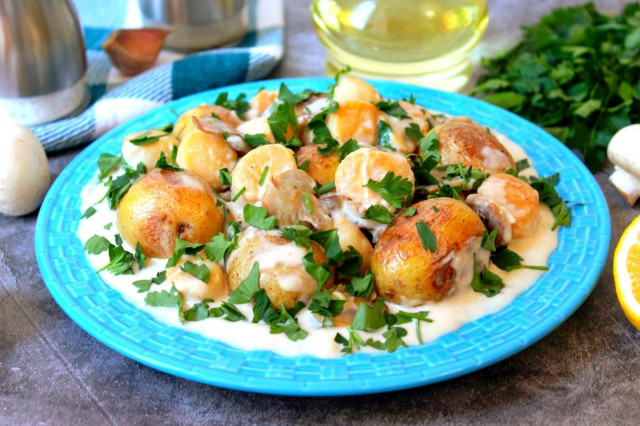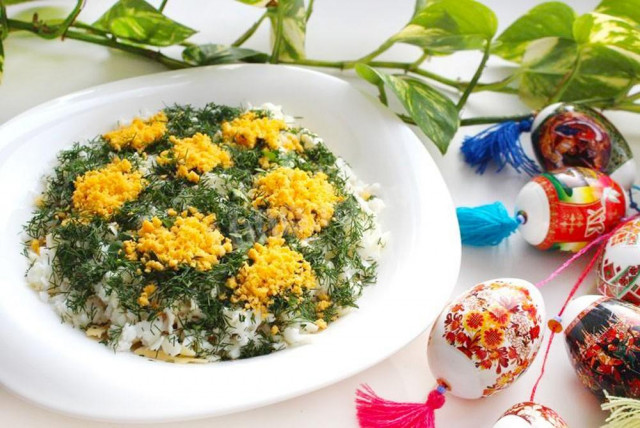Composition / ingredients
Step-by-step cooking
Step 1:
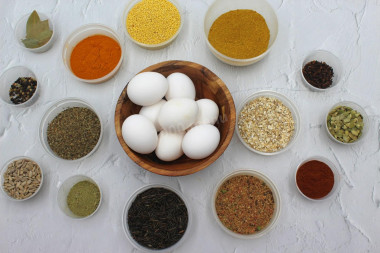
Prepare all the ingredients. Take eggs of any category, but white is better.Also, to prepare the paste, prepare water and potato starch. As a decoration, you can use cereals (corn, hercules, buckwheat), seasonings and spices (sesame, rosemary, dried herbs, bay leaf, paprika), small flower buds and so on. In general, it all depends on your imagination and the presence of certain cereals and spices at home.
Step 2:
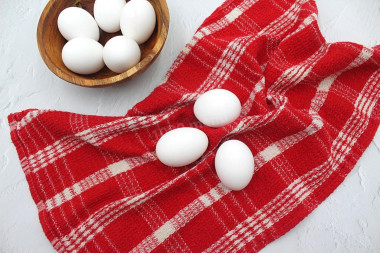
Take the eggs out of the refrigerator in advance. Wash the eggs under water to get rid of dirt particles that could remain on the shell, and let them lie at room temperature for a while.
Step 3:
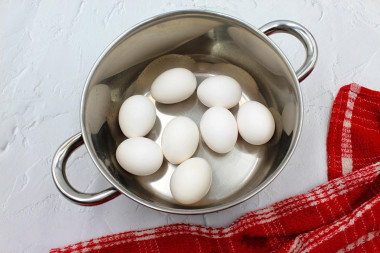
Put the eggs in a saucepan, cover with warm water. Approximately the same temperature of water and eggs will avoid a sharp temperature drop and will not lead to the formation of cracks in the shell. Put the pan with the eggs on the fire. After boiling, cook the eggs over medium heat for 10-12 minutes. Transfer the hard-boiled eggs to a container with cold water. This is done in order to make it easier to peel the shell later.
Step 4:
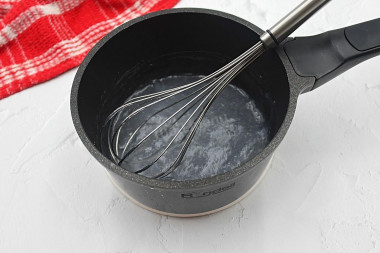
Proceed to cooking the paste, on which the entire eco-decor will be glued. Pour 50 ml of cold water into a bowl and add potato starch, stir. Pour the remaining 100 ml of water into a ladle and bring the water to a boil. Stirring the water with a whisk, enter the starch solution in a thin stream. Continue to cook the paste for a few minutes, stirring constantly, until the mass becomes thick enough. Then remove the ladle from the heat and let the paste cool.
Step 5:
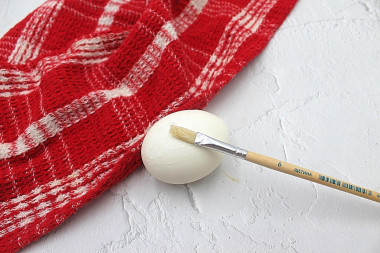
Remove the cooled eggs from the water and wipe them dry. With the help of a regular brush, apply the paste to the part of the egg that you plan to cover with grits or spices.
Step 6:
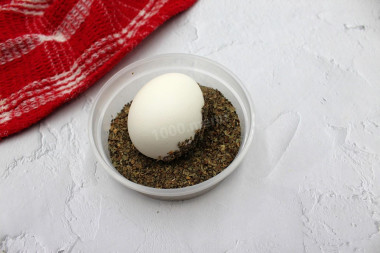
With the smeared part, slightly pressing, lower the egg into the eco-decor, and then put the egg on the dish with the decorated part of the top so that the decor dries and grabs. Do the same with steel eggs.
Step 7:
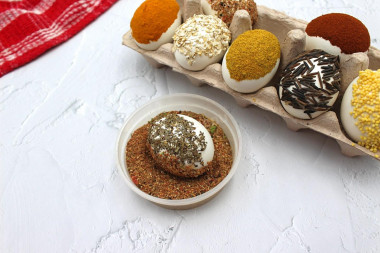
Go back to the first egg. If the decor has already seized, smear the next part of the egg with paste and lower it into another cereal or spice. In this way, smear and decorate all parts of the eggs.
Step 8:
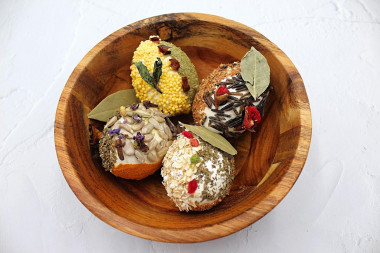
Some amount of ecodecor will crumble when drying, but there's nothing wrong with that. If desired, on top of this decor, you can glue bay leaves, flower buds, various twigs of herbs and so on to paste.
When choosing seasonings, be very careful, as some spices have the properties of coloring, for example, turmeric. If you are not afraid to dirty the tablecloth, then you can safely use them in your decor. However, after cleaning the shell, I also recommend washing your hands thoroughly so as not to accidentally stain clothes and other things.
How do I know if an egg is fresh? Break it into a separate container. First of all, there should be no unpleasant smell. The protein of fresh eggs will be transparent and clean. The yolk should not spread and will be shiny, convex, homogeneous.
Caloric content of the products possible in the composition of the dish
- Chicken egg - 157 kcal/100g
- Egg white - 45 kcal/100g
- Egg powder - 542 kcal/100g
- Egg yolk - 352 kcal/100g
- Ostrich egg - 118 kcal/100g
- Millet groats - 335 kcal/100g
- Fresh basil - 27 kcal/100g
- Dried basil - 251 kcal/100g
- Carnation - 323 kcal/100g
- Bay leaf - 313 kcal/100g
- Saffron - 310 kcal/100g
- Gelatin - 355 kcal/100g
- Water - 0 kcal/100g
- Oat flakes - 305 kcal/100g
- Raw Hercules - 390 kcal/100g
- Dried sunflower seeds - 560 kcal/100g
- Chili pepper - 40 kcal/100g
- Potato starch - 300 kcal/100g
- Wild rice - 357 kcal/100g
- Italian herbs blend - 259 kcal/100g

